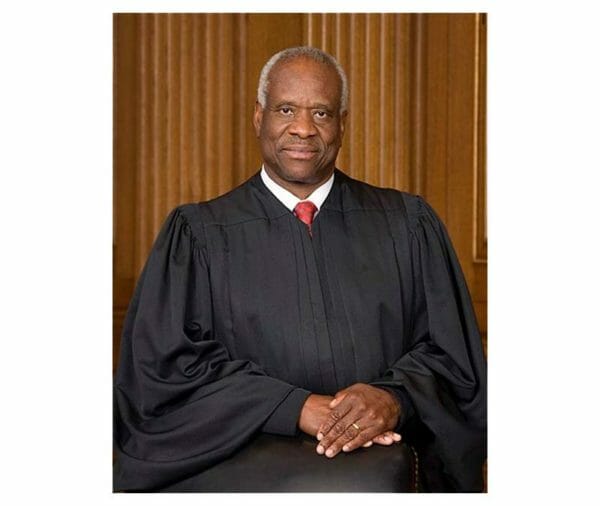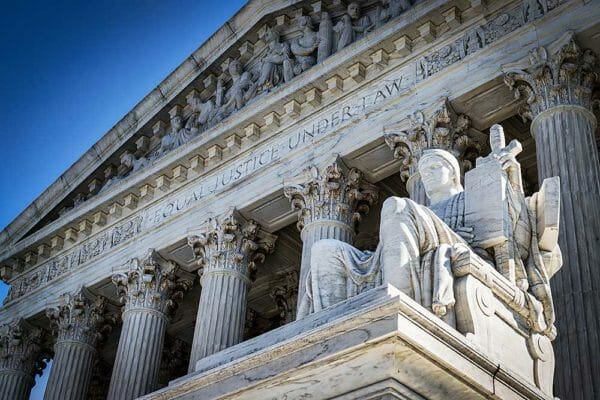
Tombstone, Arizona – -(Ammoland.com)- The Supreme Court has only one job. That job can be multi-faceted, but it’s still just one job. The job is to look at laws and lower court decisions and determine whether the law or conclusion of the lower court is following the Constitution.
It should not matter whether a Justice is personally “pro-abortion” or “anti-abortion,” “pro-gun” or “anti-gun,” “pro-religion” or “anti-religion,” or any other personal philosophy or beliefs that they may hold. The only thing that matters is that they fairly, rationally, reasonably, and faithfully interpret the original intent and meaning of the words in the Constitution and apply those words, intent, and meaning to the application of laws today.
For decades (actually almost from the very beginning), some members of the Supreme Court have allowed politics and personal beliefs to encroach on the way they apply the Constitution.
They’ve played games with the law and manipulated language, history, and logic to find creative justification for doing what they have wanted to be done, rather than doing the difficult but more straightforward work of applying the Constitution as it was written and intended, even when it doesn’t comport with their desires or philosophy.
Justice Clarence Thomas is an exception.
His decision in NYSRPA v. Bruen, the recent ruling striking down New York’s requirement that a person has a demonstrable need, above and beyond a general desire for self-protection, to be “granted” a permit to carry a concealed handgun in public, is a demonstration of applying the Constitution correctly. Not only did he and the majority of the Court reject New York’s arbitrary “need” requirement, he, with their concurrence, also made clear the constitutional standard the lower courts are supposed to be using to evaluate any fundamental right claim.
That standard is whether the law or lower court ruling comports with the Constitution.
He gives no leeway for states or municipalities’ “pressing need” or “compelling public interest,” but instead focuses solely on the meaning and intent of the words at the time they were adopted.
If Thomas’s decision in NYSRPA v. Bruen made people angry, his concurrence in Dobbs, the case which overturned Roe v. Wade, made them apoplectic, especially when he called for a reversal of other SCOTUS decisions which employed the same questionable legal theory known as “substantive due process.” Cases depending on that theory include a decision regarding same-sex marriage and another regarding choices in contraception. The rulings and Thomas’s objections to the theory of “substantive due process” triggered a flood of vitriol driven by a justifiable fear that the legal foundation for those rulings had been undermined.
The core of the insults, threats, and abuse is the idea that Thomas has a political agenda. In reality, Thomas is blocking and exposing the political agendas of others, not promoting one of his own.
It’s a pretty safe bet that Justice Thomas doesn’t have personal objections to people choosing their preferred form of contraception or consenting adults sleeping with or marrying whomever they choose. He objects to the use of a legal theory that he considers bogus to create a constitutional right where none exists, or if it does exist, it can be proven under a better argument than “substantive due process.” To Justice Thomas, it’s not about blocking abortions, making it easier for people to carry guns, or interfering in the bedroom choices of average Americans; it’s about faithfully following the Constitution. If the American people don’t like the limits or restrictions of the Constitution, they have the means available to make changes to it. But the Supreme Court is not supposed to be a shortcut to amending the Constitution, and Clarence Thomas is on a mission to not only prevent that sort of end-run in the future but to correct the abuses of past iterations of the Court.
While Justice Thomas is the most prominent example of this “originalist” approach to the job of a Supreme Court Justice, other past and current members of the Court have shared his beliefs to some extent. Some, like Chief Justice John Roberts, object to disturbing established precedents because correcting them would create a ripple effect through the judicial system. They demand adherence to precedent, even when it’s clear that precedent stems from bad decisions that have become the foundation of additional bad laws. Others are committed to the political or philosophical objectives of the bad precedents and don’t want them reversed because that would go against their political views.
While Thomas generally looks to the Constitution as it was written and at the cases that were decided shortly after it was ratified, he is also willing to accept duly ratified amendments, notably the Fourteenth Amendment.
In McDonald v. Chicago, which confirmed that the individual right to arms is a fundamental, individual right that the states cannot ignore, Justice Thomas agreed with the majority that the right must be enforced against the states. But he argued against the use of “incorporation” under the “Due Process” clause of the 14th Amendment. Instead, Thomas argued in favor of restoration of the “Privileges and Immunities” clause of the 14th Amendment, as it was intended when it was ratified.
The 14th Amendment was ratified in 1868, in the wake of the Civil War, to establish freed slaves as full citizens of the United States, with all of the constitutionally protected rights, privileges, and immunities, enjoyed by all other U.S. citizens. But back in 1873, in a case that didn’t involve race, the Supreme Court entered a ruling that gutted the core of the Amendment. Here’s the pertinent section of the amendment:
Section 1. “All persons born or naturalized in the United States, and subject to the jurisdiction thereof, are citizens of the United States and of the State wherein they reside. No State shall make or enforce any law which shall abridge the privileges or immunities of citizens of the United States; nor shall any State deprive any person of life, liberty, or property, without due process of law; nor deny to any person within its jurisdiction the equal protection of the laws.”
The Court has parsed that section into three distinct clauses: The “Privileges and Immunities” clause, The “Due Process” clause, and The “Equal Protection” clause. In 1873, less than 5 years after the 14th Amendment was ratified, in a ruling widely known as the “Slaughterhouse Cases,” the Court delivered their controversial decision claiming that the “Privileges and Immunities clause” only applies to federal laws on federal properties, and did not protect all of the rights of citizenship for all citizens of the United States, even though that was the clear and very public intent of the amendment authors, and was advertised as such in the campaign to ratify it. In subsequent cases, the Court has stood by this seriously flawed decision, but through the years, the Court has effectively restored many of the intended protections of the “Privileges and Immunities” clause by selectively and creatively applying the “Due Process” and “Equal Protection” clauses.
The decision in the Slaughterhouse cases is widely considered one of the worst decisions to come out of the Supreme Court.

It is unlikely that you could find a single legal scholar in the past 100 years, who would defend the decision as right and correct, yet the Court has steadfastly refused to correct this glaring error, instead choosing to use creative workarounds.
When the McDonald case came to the Court in 2010, arguing that individuals’ Second Amendment rights could not be usurped by the states, many legal scholars saw the case as a prime opportunity for the Court to correct their long-held Slaughterhouse error. Indeed, attorney Alan Gura, representing Otis McDonald and the Second Amendment Foundation, argued during the first half of his allotted argument time, that the Court should take this position. The second half of his argument time was planned to be focused on the Court’s more favored “incorporation” theory for applying the “Due Process” clause. In the end, the Court allowed the NRA to intervene in the case, and the “Due Process” arguments were offered by their attorney, Paul Clement – who happened to have been the Solicitor General who argued for the government in the Heller case.
The Court ruled in favor of McDonald, but chose to use “Incorporation” under the “Due Process” clause, instead of reversing the Slaughterhouse decision.
Justice Thomas argued at the time in favor of reversing Slaughterhouse and has consistently argued for Supreme Court Justices to correct past mistakes and reduce their reliance on past precedents in ruling on cases. He doesn’t argue this to advance his own political agenda or make his job easier, but to bring the Court back into alignment with the Constitution and hopefully keep it there.
At the moment, Justice Thomas is the leading advocate for this approach, though there are a couple of other justices currently on the Court who tend to agree with his position, at least to a substantial degree.
But there are powerful forces that are adamantly opposed to Thomas’s originalist approach. Those forces include most of the legacy media and the entire Democratic Party. They paint Justice Thomas as a crazed right-winger, trying to undo all of the good things the Court has accomplished over the past 50+ years, and they have riled up mobs of people who are now convinced that Thomas is the greatest threat to our democracy that anyone has ever seen.
This is wrong, abusive, and dangerous – to Thomas and our nation.
So I ask you to join me in praying for Justice Thomas’s continued good health and safety, and for his efforts to rein in the Courts to be successful.

